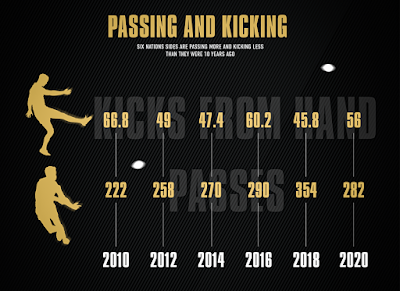International rugby has been labeled as uninteresting and unwatchable, especially with England’s second win over France on the Six Nations title at the Autumn Nations Cup finale. The win attracted unwarranted criticism from all fronts and figures, as England had attempted eight penalties and needed a lot of time to take the game to extra time.
The incident triggered a question in the minds of many rugby enthusiasts, on whether rugby had turned itself into a boring sport.
In the light of this, we attempt to analyze ten Six Nations in hopes of understanding how the style of playing rugby has evolved. But before that, we must look into the excitement that rugby, as a sport, holds.
Rugby is the ability to blend speed, agility, and strength in effortless swings of the ball from one player to another. It is physically challenging and energy-drowning but calls for the passions of any teammate who wishes to succeed. It requires control when it comes to tackling the opponent, making football seem like a two-dimensional sport.
Let us start with scoring in rugby.
Betway puts out that till 2013, the scoring was low with only an average of 35 points in one game. But 2016 showed a sharp increase in points, with every game having an average of 46 points scored.
But the kind of scoring can tell us whether players make the game intriguing to watch.
Conversions and tries usually help a game to be thrilling for the viewer, the former worth 2 points and the latter worth four to seven points depending on the type of kick.
In the 2010 tournament, successful conversions made up more than 51% of the total points scored, with 48 tires. The 2015 tournament saw mere 46 conversions with 62 tries and the recent Six Nations saw 49 penalty goals with 74 tries.
Though tries do not necessarily make a game entertaining, it is what happens before the tries are scored.
Critics say that Six Nations shows too much importance to territory and set piece dominance, with little credit given to the ball. In the decade between 2010 and 2020 – the number of kicks per hand fell by 20 percent. Continuous hand kicks make for boring rugby, so players are keeping the ball in hand more.
However, viewers and fans want to see the dexterity of the players with the ball in hand, to make the match interesting to watch.
In the early half of the decade, Six Nations matches had 5 breaks, with 10 defenders beaten every 80 minutes. Line breaks decreased until 2013, but ever since then it has increased in number in the following years. Defenders were beaten a total of 91% of the time, compared to 2010.
Some optimists would argue that Six Nations has been adventurous with their rugby styles in the last couple of seasons over the 10 years. Sure, there were few dull games here and there, but none which suggest that rugby has become totally unwatchable.
HarpinOnRugby.net



